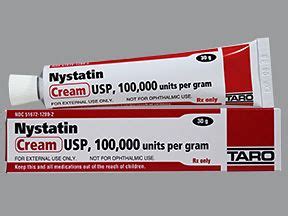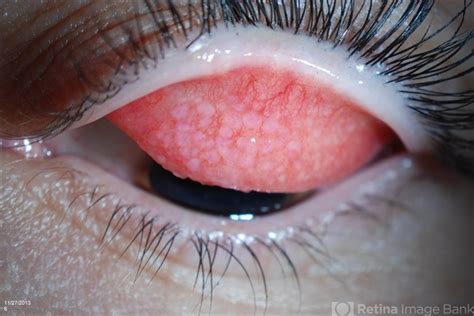When it comes to treating fungal infections, particularly those affecting the skin, nystatin ointment is a commonly prescribed medication. It belongs to the polyene antifungal group and has been widely used for its efficacy in combating various forms of fungal infections. Understanding the uses, applications, and benefits of nystatin ointment can provide valuable insights into managing and relieving the discomfort associated with fungal infections.
Introduction to Fungal Infections
Fungal infections can range from mild to severe and affect different parts of the body, including the skin, nails, and mucous membranes. These infections occur when a fungus takes hold and grows, often due to an imbalance in the body’s natural flora or an opportunistic invasion by a pathogen. Common types of fungal skin infections include candidiasis (caused by Candida species), ringworm (despite its name, it’s caused by a fungus, not a worm), and athlete’s foot.
How Nystatin Ointment Works
Nystatin ointment works by binding to the sterol component of the fungal cell membrane, primarily ergosterol. This binding causes the cell membrane to become permeable, leading to the leakage of vital cellular components and ultimately the death of the fungal cell. It is particularly effective against Candida species, which are common causes of skin and mucous membrane infections.
Uses of Nystatin Ointment
Treatment of Cutaneous Candidiasis: Nystatin ointment is specifically used for the treatment of cutaneous candidiasis, a fungal infection of the skin caused by Candida species. It’s effective in relieving symptoms such as itching, redness, and cracking of the skin.
Intertrigo: This is a type of fungal infection that occurs in the folds of the skin, such as the armpits, groin, or between the buttocks. Nystatin ointment can be used to treat intertrigo by reducing fungal growth in these moist, warm areas.
Diaper Rash: In infants, Candida can cause diaper rash, characterized by a red, irritated bottom. Nystatin ointment can be applied to the affected area to help clear the infection.
Other Fungal Infections: While its primary use is against Candida, nystatin can be used for other fungal infections of the skin, though its effectiveness may vary depending on the causative organism.
Application and Dosage
The application and dosage of nystatin ointment should be as directed by a healthcare provider. Generally, it is applied to the affected area 2-4 times a day. The ointment should be gently rubbed into the skin until it disappears. Treatment typically continues for a period of 2-4 weeks but may vary based on the severity and type of infection.
Side Effects and Precautions
While nystatin ointment is generally well-tolerated, it can cause side effects such as skin irritation, including redness, itching, or burning at the application site. In rare cases, allergic reactions can occur. It’s essential to follow the prescribed dosage and application instructions carefully to minimize the risk of side effects. Additionally, nystatin ointment should not be used for infections in the eyes or inside the mouth without specific guidance from a healthcare provider.
Comparison with Other Antifungal Treatments
Nystatin ointment is one of several antifungal treatments available. Other options include clotrimazole, ketoconazole, and terbinafine, each with its spectrum of activity and indications. The choice of treatment depends on the type of fungal infection, the causative organism, the severity of the infection, and patient-specific factors such as age and other health conditions.
Historical Evolution of Antifungal Treatments
The development of antifungal medications has been a gradual process, with significant strides made in the mid-20th century with the introduction of nystatin. Prior to this, treatment options were limited, and fungal infections could be quite challenging to manage. The discovery of nystatin marked an important milestone, providing an effective treatment against Candida infections. Since then, the arsenal of antifungal drugs has expanded, offering a range of treatment options tailored to specific fungal pathogens and infection types.
Future Trends in Antifungal Therapy
As resistance to current antifungal medications becomes a growing concern, research into new therapeutic agents and strategies is underway. The future of antifungal therapy may involve novel compounds, combination therapies, and innovative delivery systems designed to enhance efficacy and minimize resistance. Furthermore, the development of vaccines against certain fungal pathogens could revolutionize the prevention and treatment of fungal infections.
Practical Application Guide
For those considering the use of nystatin ointment, here are key takeaways: - Consult a Healthcare Provider: Before starting treatment, it’s crucial to have a proper diagnosis to ensure that the infection is indeed fungal and that nystatin is the appropriate treatment. - Follow Instructions: Adhere strictly to the prescribed dosage and application schedule. - Monitor Progress: Keep track of how the infection responds to treatment and report any side effects or concerns to your healthcare provider. - Complete the Course: Finish the full treatment course as directed, even if symptoms improve before completion, to prevent recurrence.
FAQ Section
What is nystatin ointment used for?
+Nystatin ointment is used to treat fungal infections of the skin, particularly those caused by Candida species.
How do I apply nystatin ointment?
+Apply the ointment to the affected area 2-4 times a day, gently rubbing it into the skin until it disappears.
Can nystatin ointment be used on diaper rash?
+Yes, nystatin ointment can be used to treat diaper rash caused by Candida in infants.
What are the common side effects of nystatin ointment?
+Common side effects include skin irritation, such as redness, itching, or burning at the application site.
How long does it take for nystatin ointment to work?
+The treatment duration typically lasts 2-4 weeks, depending on the severity and type of fungal infection.
In conclusion, nystatin ointment is a valuable tool in the management of fungal skin infections, offering relief from symptoms and helping to clear the infection. Its effectiveness, combined with its relatively low risk of side effects, makes it a preferred choice for many patients. However, it’s essential to use nystatin ointment under the guidance of a healthcare provider to ensure proper diagnosis and treatment. As the landscape of antifungal therapy continues to evolve, staying informed about the latest developments and options can help individuals make the best choices for their health.



